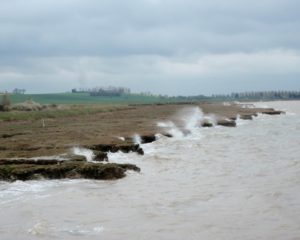Over the coming months the CBESS team at Bangor University will be finalising a saltmarsh carbon stock prediction tool to be launched in June alongside ‘The Saltmarsh App’.

Whilst the App will focus on engaging with the public, the tool will be aimed at environmental decision makers in the public sector, providing them with a straightforward means of attaching a carbon stock value to salt marshes in England and Wales – carbon storing by coastal systems is often underestimated and poorly documented. The tool was developed to address this knowledge gap and will help highlight one of the useful ecosystem services that salt marshes provide. By furthering our knowledge of this important frontline habitat and the carbon stored within its soils, the greater our understanding will be of its role in mitigating climate change and providing coastal protection.

The analytical model for the carbon stock predictions was developed by Dr Hilary Ford following a CBESS field campaign covering 23 saltmarshes up and down the Welsh coastline. Predictions were validated by contrasting against actual observations done during the 2013 CBESS surveys of Essex and Morecambe Bay salt marshes. By simply identifying key plant communities and their underlying soil type, the tool will give an estimation of the carbon (tonnes per hectare) held in the top 10 cm of saltmarsh soil as well as the degree of certainty the prediction contains. The tool will take the form of predictive matrices (vegetation+soil info → predicted carbon stock) which can either be used in the field or up-scaled from existing data sets or maps of plant community or soils.
The tool will be accompanied by interactive GIS-based carbon maps for Welsh salt marshes, developed by Cai Ladd. Similar maps can be rolled out for English marshes by use of existing National Vegetation Classification GIS platforms.
